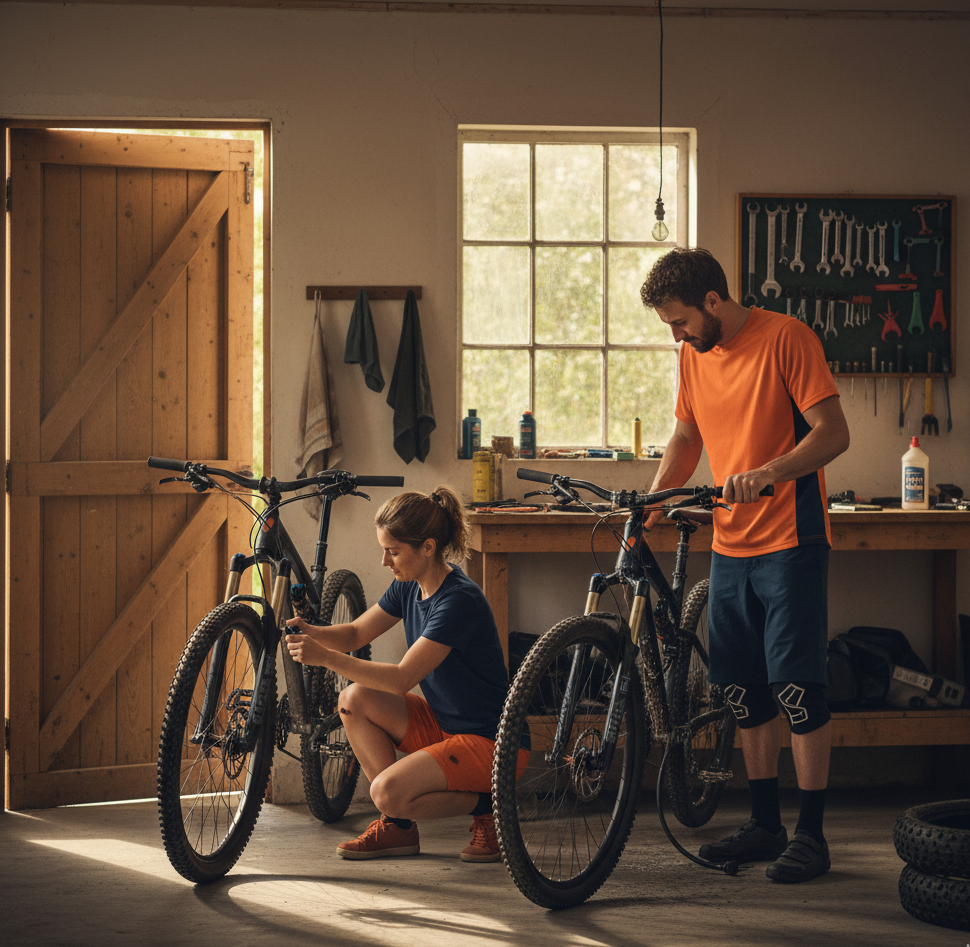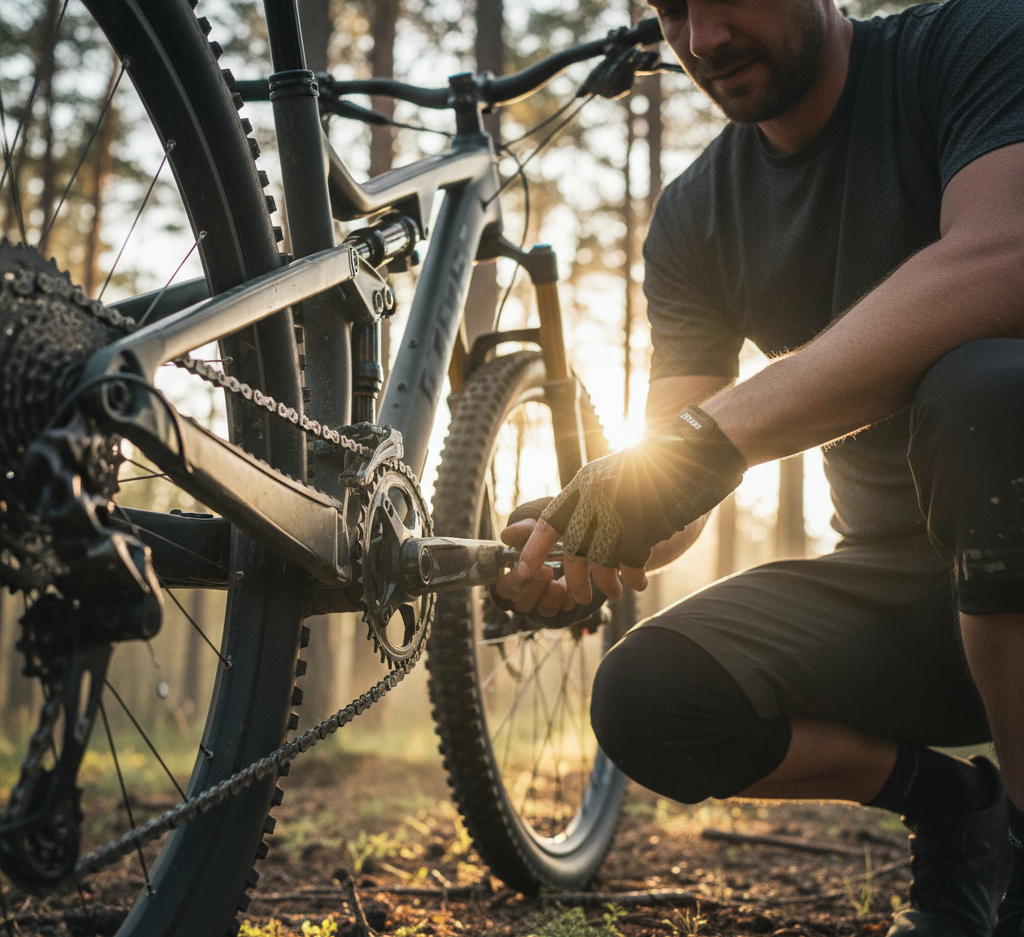The Best Fluffy Pancakes recipe you will fall in love with. Full of tips and tricks to help you make the best pancakes.
Gravel Cycling for Beginners : Why Less is More
Discover the minimalist approach to gravel cycling
Sarah stood there in her garage at 6 AM on a Saturday, coffee getting cold on the workbench. Surrounded by—and this is not an exaggeration—probably $3,000 worth of gravel cycling gear she’d accumulated over 6 months without riding once. 3 tire gauges (why three?), GPS computers still wrapped in plastic, tubeless kits that looked like science experiments, bibs in colors she’d never wear. Her gravel bike? So loaded with accessories it could probably survive the apocalypse. But she couldn’t even… she just stood there, frozen. The irony hit different: trying to prepare for everything meant she was ready for absolutely nothing.
And honestly? This is everyone’s story now.
The Thing Nobody Tells You About Getting Started
Here’s what the cycling industry won’t say—they need you confused and buying stuff. But minimalism? That’s your secret weapon, hiding right there in plain sight.
It’s not about suffering or pretending you’re some kind of gravel monk who rides in sandals (though I’ve seen that, actually, at a 2024 event in Kansas—wild). It’s strategic elimination. Like Marie Kondo for your bike, except instead of asking if it sparks joy, you ask: “Does this help me actually ride, or just help me think about riding?”
The edge comes down to three things:
• You make decisions faster while others are still on Reddit arguing about bottom bracket standards
• Your skills develop deeper because you’re not distracted by gadgets
• You actually enjoy it—which sounds obvious but most beginners don’t, they’re too stressed
The Bike & Gear Thing (Just Stop Overthinking It)

Five things. That’s it:
• A bike that fits your body
• A helmet (obviously)
• Basic repair knowledge—like, YouTube-level basic
• Water
• Clothes that don’t make you miserable
Everything else? Negotiable. Debatable. Probably unnecessary.
The bike decision: you know what I learned? It doesn’t matter nearly as much as the industry wants you to believe. Get something with tire clearance, decent gearing, bottle mounts. Done. Could be a gravel bike, a touring rig, even a mountain bike with different tires—my friend Jake rides a 1996 Rockhopper with slicks and he’s done centuries. Before buying ANY accessory ask yourself: “Will not having this literally prevent me from riding?” If no—don’t buy it. Not yet anyway.
Learning to Actually Ride the Thing
1. Body position (shift weight back on descents, forward climbing, loose and centered on rough stuff)
2. Bike handling on loose surfaces (trust your tires! look ahead not down! some sliding is normal and actually fun)
3. Pacing (find sustainable effort, don’t blow up in the first 30 minutes—everyone does this, it’s like a rite of passage)
Here’s something that changed my riding completely: single-focus rides. Instead of trying to improve everything at once (exhausting and ineffective), dedicate entire rides to ONE skill. Tuesday you’re all about cornering body position. Thursday it’s steady climbing effort. This targeted approach—it’s like the difference between learning phrases in a new language versus memorizing random vocabulary words.
Training complexity is overrated: You don’t need periodized plans or zone-based intervals or any of that. Ride your bike 2-3 times weekly. Gradually go longer. When you can ride three hours comfortably? You’re ready for most gravel events. That’s the entire plan—I’m not even kidding.
Routes & Endurance (Without the Paralysis)

This is where beginners absolutely spiral into overthinking territory.
Two questions for route planning:
• Can I get back if things go wrong?
• Will this challenge me without destroying me?
If yes to both—go ride it. Seriously, that’s sufficient.
Start with familiar roads, add gravel sections slowly. My first gravel ride was maybe 25% actual gravel, rest pavement. And that’s perfect! Don’t apologize because Instagram riders are doing gnarlier stuff. You’re building comfort.
Building endurance through subtraction (sounds backwards but works): Don’t add structured workouts—remove obstacles preventing consistent riding. Can’t find 3-hour blocks? Ride 90 minutes more often. Can’t decide which route? Pick a direction, follow interesting roads. Paralyzed choosing between three local loops? Rotate them weekly, stop deciding.
Why This Actually Works (The Science-ish Part)
Behavioral psychology backs this up—Sheena Iyengar’s famous jam study showed people presented with 24 varieties were LESS likely to buy than those seeing only 6 options. Constraint breeds clarity. (Also creativity, but mostly clarity when you’re starting out.)
Natural experiment: two beginner gravel Facebook groups I’ve watched. “Gravel Gear Heads” focuses on equipment debates and optimal setups. “Just Ride Gravel” emphasizes getting out with whatever you have. Over 18 months, the Just Ride people logged 40% more actual riding time and reported way higher satisfaction. The minimalist approach produces measurable results, not just feel-good philosophy.
Ted King (former pro, coach now) said something that stuck with me: “The best gravel bike is the one you’ll actually ride. The best training plan is the one you’ll actually follow. Everything else is mental masturbation.” Harsh? Maybe. True? Absolutely.
Your Challenge: The Minimalist Audit
Before you buy another thing or plan another route—do this:
List everything you own for gravel cycling. Everything.
Three categories: Essential (can’t ride without it), Useful (meaningfully improves experience), Noise (everything else—be honest).
Next month: Use only Essential and Useful. Box up the Noise.
Track results: Count rides completed, miles covered, enjoyment level, progress toward goals.
Assess honestly: Would anything from Noise have meaningfully improved your experience? You’ll be shocked how rarely the answer is yes.
Sarah eventually made it out of that garage—she put away everything except bike, helmet, water bottle, basic seat bag with repair stuff. Her first ride was only 12 miles, half pavement. She got a flat tire, made rookie mistakes. But she came home glowing, already planning the next one. Six months later: multiple centuries, a bikepacking overnighter. Not because she accumulated more gear but because she removed everything standing between her and the simple act of riding.
The gravel’s waiting. Will you let complexity keep you from it, or will you just… ride?
For More Gravel and Road cycling Strategies, Check out our Full Road Cycling Guide.





